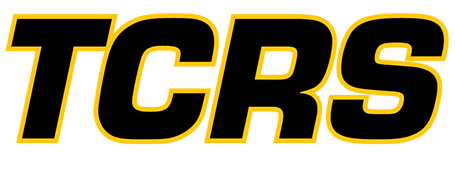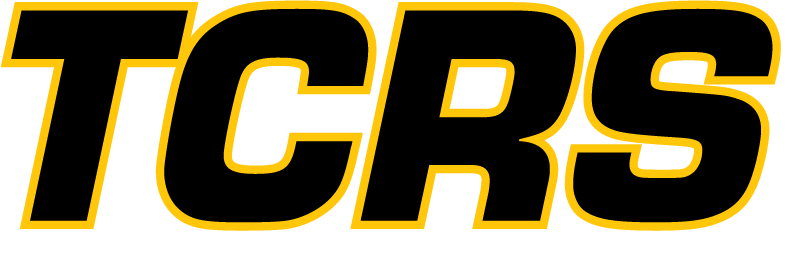Improving Temperature Control in Manufacturing
The manufacturing industry depends on proper temperature control for smooth, efficient operations. However, certain challenges can arise with temperature control, meaning facility managers need to be prepared to overcome them.
How can you optimize heating and cooling in your facility? Learn solutions to improve temperature control in manufacturing settings below.
The Importance of Temperature Control in Manufacturing
Temperature regulation is critical in manufacturing settings because it directly contributes to cycle times, product quality, cost savings and employee safety. A properly controlled work environment can offer the following benefits:
1. Production Quality and Efficiency
Temperature control helps minimize product defects and improve overall quality. As such, it makes manufacturing processes more efficient and reduces downtime.
When temperatures are too high or low, they can compromise a product's chemical composition, texture and appearance. Take plastics manufacturing, for example. This process usually involves feeding plastic into a heated barrel. The feed throat must be cool enough to prevent the plastic from melting too early when it enters the mold.
Additionally, automotive manufacturing requires effective temperature monitoring for testing and inspection purposes. Vehicles are often exposed to extreme temperature fluctuations to ensure they can function in different environments. Manufacturers must regularly monitor and adjust temperatures to keep their products within the necessary ranges.
2. Workplace Health and Safety
In some cases, exposing products to vast temperature fluctuations can have severe risks. A lack of temperature control can lead to issues like equipment failure, fires and explosions, putting operators and the company's reputation in harm's way.
In chemical manufacturing, for example, improperly managed products can burst into flames, combust or spread toxic gases throughout the facility. This risks the health and safety of staff and the surrounding community.
Excess heat in manufacturing plants can slow down equipment to the point of malfunctions. It can also affect employees' health, safety and productivity, increasing the risk of heat stress and exhaustion. Likewise, too-cold temperatures can lead to cold stress in workers, which can have mild to life-threatening symptoms.
To that end, manufacturers need reliable temperature control instruments for buildings, equipment and products. That way, they can:
Monitor temperatures in real time.
Prevent equipment damage and operator injuries.
Ensure a safer work environment for employees.
3. Energy and Money Savings
Temperature control optimizes and reduces energy consumption, yielding lower monthly bills for manufacturing plants. It reduces the labor and material costs from production waste, defects and remakes. As the previous section shows, regulating temperatures also minimizes the expenses associated with equipment damage, building repairs and workplace accidents.
Challenges of Controlling Temperatures in Manufacturing
Various factors can complicate temperature control for manufacturers, such as:
Complex facility layouts: Many manufacturing buildings are vast. They contain several production areas, offices and storage spaces. Temperature control can be challenging in such diverse facilities. Different spaces may require different temperature levels.
Surrounding environment: Environmental factors like seasonal changes, temperature fluctuations and climate can impact internal temperatures in manufacturing buildings. Variables like insulation levels, ventilation and solar radiation can also complicate temperature control.
Wide temperature ranges: Manufacturing processes require varying temperatures, making it difficult to maintain consistent temperature control. For instance, food and beverage processing needs cooler temperatures for refrigeration. Meanwhile, glass manufacturing requires warmer temperatures to heat and melt raw materials.
Energy usage: Temperature monitoring systems use considerable energy in manufacturing settings. Inefficient systems can lead to high energy consumption and utility bills. Maintaining a balance between proper temperature levels and low energy usage can be a challenge in the manufacturing sector.
Regulatory compliance: The manufacturing industry must uphold rigorous temperature control standards for quality and safety reasons. Noncompliance with these required processing and storage temperatures can lead to legal consequences.
Fortunately, the right temperature control solutions can help combat these obstacles in your manufacturing plant.
How to Improve Manufacturing Temperature Control
Manufacturing facilities need effective temperature control to provide safe, comfortable working conditions for staff. A few strategies can enhance temperature control in your manufacturing facility:
1. Airflow Optimization
Many temperature control issues in manufacturing plants stem from poor airflow. Production equipment and machinery generate substantial heat, causing hot air to rise to the ceiling. If this heat isn't filtered out, it will continue to drop, making the overall facility too warm. Adjusting the thermostat may seem like a simple solution, but this won't usually make a difference on its own.
Industrial fans can help warm air escape your building, preventing it from collecting in the facility. Keeping heat in constant motion, they reduce interior temperatures by dispersing hot air pockets.
Installing an air handler unit can be a great way to improve airflow and ventilation in your manufacturing plant. An air handler contains a fan and an evaporator coil that work together to circulate air, maintaining comfortable temperatures in your building.
2. Cooling Zones
Different parts of a manufacturing facility have varying temperature requirements. For instance, an office would likely have different cooling needs than a production area. This is where a heating, ventilation and air conditioning (HVAC) zoning system comes in handy.
HVAC zoning divides a structure into multiple “zones,” each with its own programmable thermostat and temperature control capabilities. In other words, you can adjust the temperatures for different rooms or floors of your facility to accommodate various heating and cooling needs. This feature makes HVAC zoning an ideal option for large, complex manufacturing plants with numerous production, storage and administrative areas.
Zoned HVAC systems help reduce energy consumption and costs, as you can easily monitor and adjust temperatures as necessary. HVAC zoning prevents excess power usage by the building's cooling units.
3. Air Conditioning
Centralized AC uses refrigerants to cool interior air. Its large fan circulates air across evaporator coils and into supply ducts. The system retrieves air from the conditioned space through return ducts. AC units are excellent for controlling temperature, moisture, airflow and air cleanliness.
Though typically used for cooling applications, AC units can also help heat a facility. Combining cooling and heating can help control humidity levels. You can also improve air conditioning by combining air handlers and chiller units.
A single AC unit can accommodate small areas like offices or homes. However, large manufacturing plants often require multiple units for maximum temperature control.
Choose TCRS for Temperature Management Solutions for Manufacturing
Ensuring temperature control during manufacturing can be simple with the right products. At Temperature Control Resource Centers (TCRS), we have various temperature management equipment available for rent:
AC units
Air handlers
Chillers
Cooling towers
Dehumidifiers
Heating equipment
Heat exchangers
Our experts can work with you to select a unit that meets your needs. We'll also deliver it to your facility and handle the installation process.
Whatever your unique heating and cooling needs, we're ready to help you find reliable solutions for your business. Browse our rental temperature control equipment or contact us to let us know how we can assist you!




